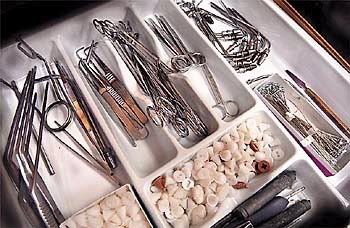
Embalming autopsy cases differs from standard embalming because the nature of the post mortem irrevocably disrupts the circulatory system with the removal of organs for examination. In these cases, a six-point injection is made through the two illiac or femoral arteries, subclavian or axillary vessels, and common carotids, with the viscera treated separately with cavity fluid or a special embalming powder in a viscera bag. In many mortuaries in the United States (such as the Los Angeles County Coroners Office) and New Zealand, these necessary vessels are carefully preserved during the autopsy; in countries in which embalming has been less common, such as Australia and Japan, they are routinely excised. This inhibits the type of embalming that families prefer and is a common source of conflict between government pathologists and embalmers.
Long-term preservation requires different techniques, such as using stronger preservative chemicals and multiple injection sites to ensure thorough saturation of body tissues.
It should be remembered that embalming is only meant to temporarily preserve the body of a deceased person. Regardless of whether embalming is performed, the type of burial or entombment, and the materials used — such as wood or metal caskets and vaults — the body of the deceased will eventually decompose. Modern embalming is done to delay decomposition so that funeral services may take place or for the purpose of shipping the remains to a distant place of disposition.
No comments:
Post a Comment